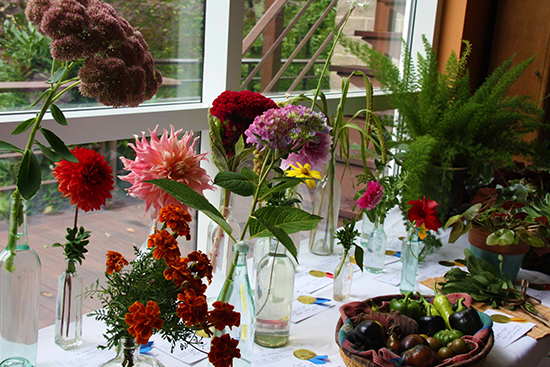Garden Clubs and Their Involvement in Conservation
By: Amos S. Eno
Posted on:06/11/2018What nobody in todays’ environmental movement recognizes is how important Garden Clubs were back when we were forming leadership for our environmental agenda.

My career started with my working for the Secretary of Interior in 1973 in the Nixon administration. Back in those days, and from an environmental standpoint that was like, to steal a phrase from Dean Acheson, “Being at Creation”, for it was when all our environmental laws were written and the bureaucratic infrastructure put in place for Clean Air, Clean Water, Endangered Species etc.
But what nobody in todays’ environmental movement recognizes was how important Garden Clubs were in those days in forming the leadership for our environmental agenda. For every environmental initiative at Interior we called in Mrs. Wallace (Readers Digest, NY), and Maggie’s close friend Sally Brown , from Harrods Creek, KY, and they energized garden clubs nationally and locally to support our environmental initiatives.
In those days and it remains true to a large extent today, a major focus of environmental focus was buying public land. Today, however, we live in a different world requiring a different focus, because fiscally-we are a nation sporting a $19Trillion debt-, demographically, and programmatically in terms of conservation on the ground, we live in a different universe. Maggie Bryant was my board Chair at National Fish and Wildlife Foundation for a decade when we pioneered investments in private land conservation underwriting the creation of Ag and Cattleman Land Trusts in CA, CO, TX, NM/AZ, and creating USFWS’ Partners for Wildlife Program.
Today we have an increasingly urbanized population with 81% living in urban, suburban communities.
Today 71% of the lower 48 states are in private ownership: 28% federal, 9% states, 2.5% Native Americans.
Today the average age of farmers is 60++, and the average of forest owners, who represent 4/5th of all land owners nationwide, is 70++.
Since 2006, when President Bush first signed the Pension Act, conservation easements represent a financial windfall for land owners with 50% deduction against all income AGI and 15 year carry forward. Last decade I did 1.1 million acres of easements on forests in Maine :762,000 acre Pingree project and the 342,000 Downeast Lakes project. These two easements represent 1/3 of all conservation lands in Maine and they remain working landscapes on the tax roles and providing jobs for rural counties.
This afternoon at Maggie’s I spent an hour with George Ohrstrom, who is on my LandCAN board, and he described how his organization, the DownStream project was partnering with Blue Ridge Conservation alliance, and PEC on an initiative to protect the Blue Ridgeline.
Today conservation needs the equivalent of Silicon Valley incubators to drive innovation, create organizations like Carey Crane and Chandler Van Vorhees Acre Investment which is planting trees up and down the Mississippi alluvial valley to capture carbon. My foundation is involved with the Noble Foundation in Ardmore, OK in a comparable effort to capture carbon from soil retention in improved grazing across fly over America. Recently Chandler sent me a speech, given by James Madison in 1818 that underscores the principals of many of today’s conservation innovators. I quote: “Of all the errors of our rural economy, none is perhaps so much to be regretted as the injudicious and excessive destruction of timber and firewood… It is high time for many farmers in this quarter of Virginia to take this subject into serious consideration.” A century later my great uncle, Gifford Pinchot, who founded the US Forest Service and was Teddy Roosevelt’s right hand for conservation, made the same points. And he also made the point explicitly that the success of conservation in this country depends on the grasp that women have of it.
This brings me back to Garden Clubs. You are one of the most important wheels of the conservation vehicle and we need to reignite your involvement in leading our conservation agendas.
I urge you to promote conservation easements throughout Virginia, and to tackle the challenge of protecting the Blue Ridge and abutting properties and keep them in working farm and forest scapes. Land CAN is building www.Virginia LandCAN, and we are here to assist your involvement in these efforts on a scalable basis.
 Sign In
Sign In
 Sign In
Sign In
